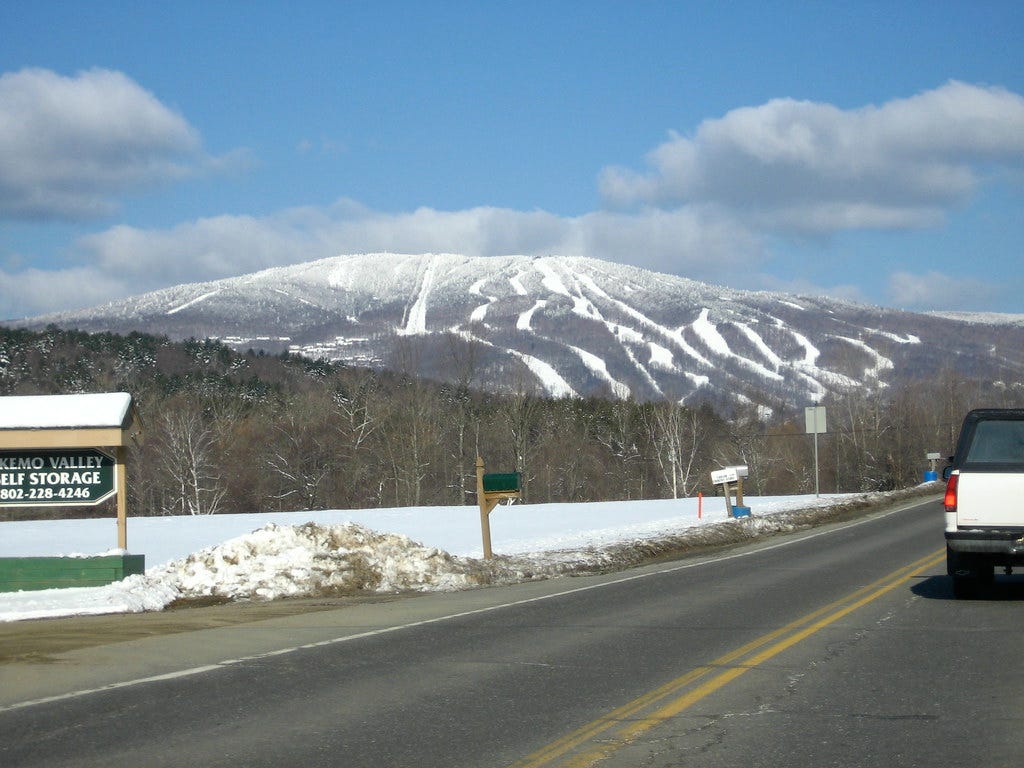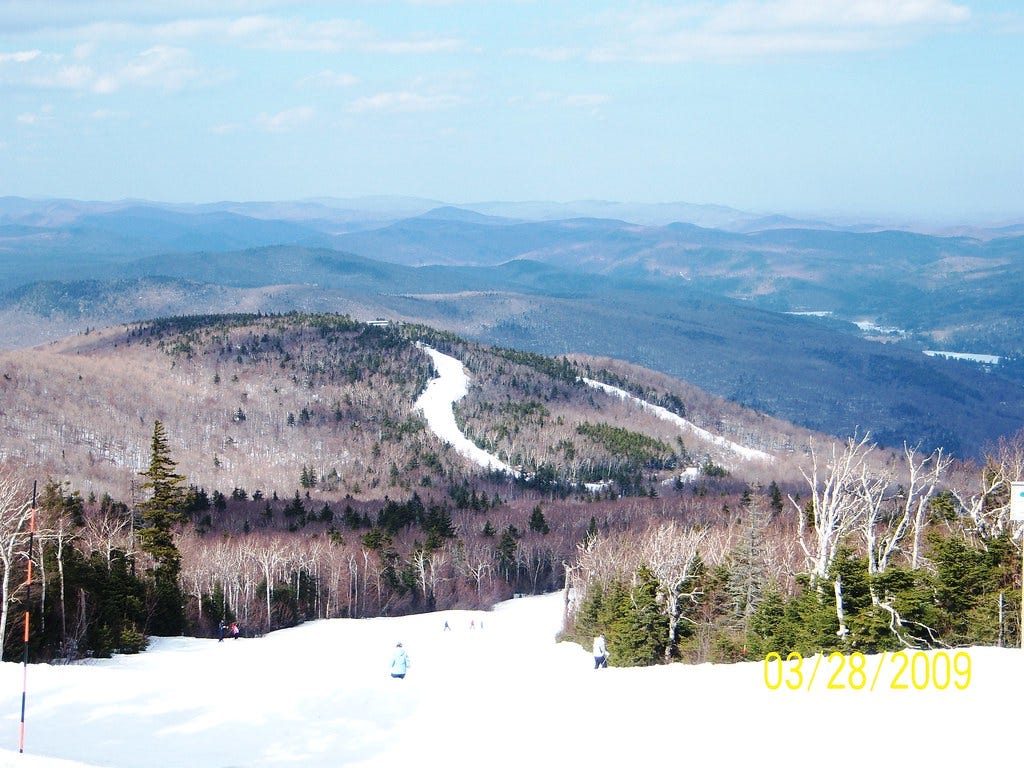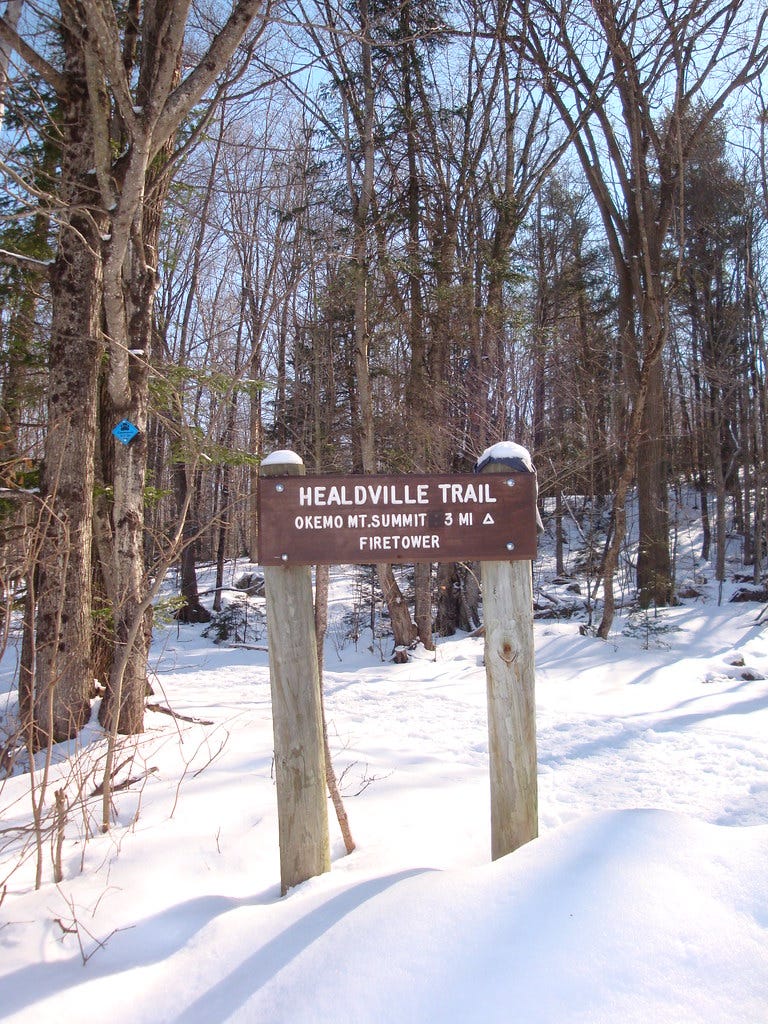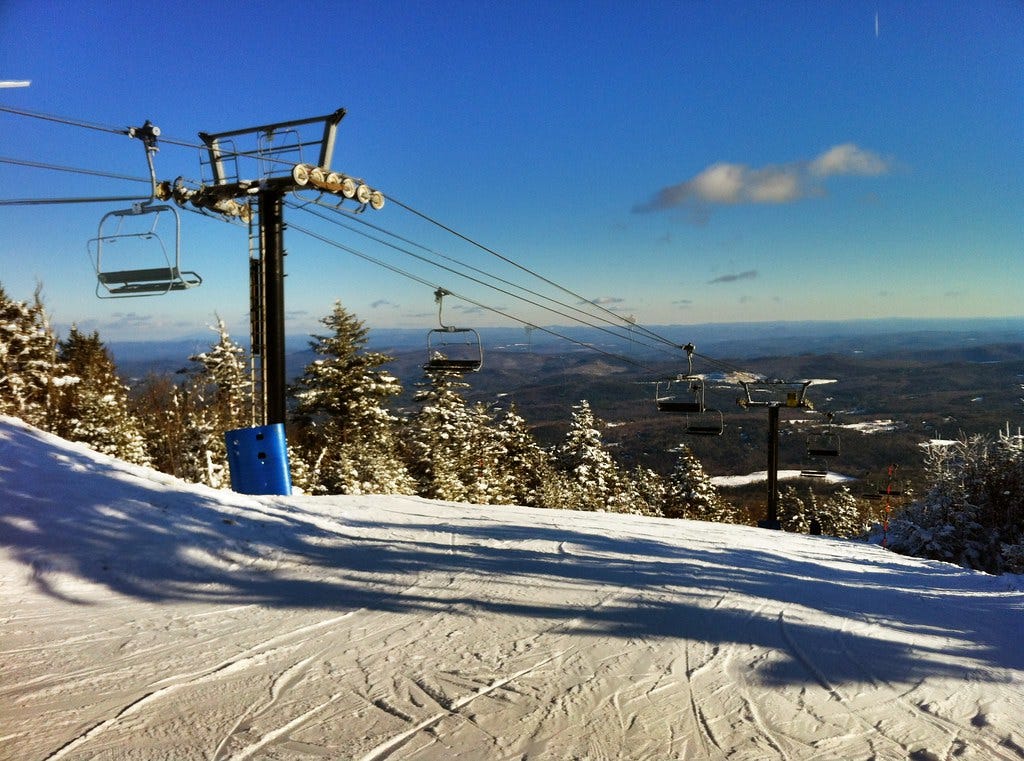Before we go any further, I need to make something clear: I’m a really lousy skier, and that’s a choice I’ve made. Whether we’re talking long, flat Nordic tracks or rolling mounds, my butt has a loving relationship with the ground that it just can’t quit. Sometimes, even when I’m in the middle of a smooth and successful descent, I will intentionally wipe out as a means of damage control. (“Why prolong the inevitable?” my brain seems to say, just as I eat shit.) But I’ve made peace with this, enjoying the brief moments when I do become a competent skier and appreciating the beauty and exhilaration of skiing in general. And for those of you who will soon be gliding down powdery haunches on a pair of wooden slats, this week’s hiking newsletter is for you.
The one thing that makes me glad to not ski regularly is the price of downhill skiing. Lift tickets, basic gear, and chalet lodging add up quickly, to a sum that would make Solomon blush. And it wasn’t always like this. Skiing took root in New England in the early 20th Century. Norwegian immigrants settled in Stowe and used skis to navigate snowbound roads. The earliest ski lifts that opened in Vermont were ramshackle mom-and-pop operations: quite often, a guy with a motorized tow rope that would pull skiers to the top of a hill. Today, you’d be hard pressed to locate such a grungy, low-cost gateway to the most coveted slopes. But there is another way: an older way.
Since many of our ski resorts are located on state land—which the resorts lease directly from the state—there are limits to how strictly the resorts can decide who gets to access the slopes. If you’re somehow able to make your way to the top of a mountain at a resort, without using the chairlift or hiking up the ski slopes, you’re pretty much free to glide down the slopes, as if you were a paying resort visitor.
Consider Okemo Mountain. One of the flagship ski resorts in Vermont, this heap of timber and stone is located within the depths of the Okemo State Forest and it features the largest vertical drop in Southern Vermont. (The journey from the summit, down the developed eastern face to the base, offers over 2,000 feet of elevation loss.) But the actual name of Okemo Mountain is Ludlow Mountain, and skiing accounts for just a fraction of how the mountain is used. On the northeast side of Ludlow Mountain, an angular 3-mile path offers access to the same summit from which skiers descend. This is the Healdville Trail and for hikers who are willing to do some strategic planning and schlep some extra gear, it’s a passage to the slopes.
The first riddle to figure out is trail transportation. From Ludlow, a choose-your-own-adventure patchwork of ski trails that range from green circle (easy) to double-black diamond (X-TREME) will lead you to the resort at the base of the mountain. And from here, you’ll need to figure out a way to get back to your car at the Healdville trailhead on the other side of the mountain. For this reason—and for general winter hiking safety—this “hike and glide” adventure is best done with a partner. You can bring two cars, dropping one car at Okemo and the other at the trailhead. Or, if only one of you feels like skiing down the mountainside, you can park at the trailhead, climb to the summit together, and then part ways. The backtracking hiker (ie, me) returns to the vehicle, drives over to Okemo, and the waiting skier buys them a beer for doing the legwork.
Next, there’s the matter of gear. Backcountry skiers who negotiate undeveloped mountains will be used to carrying a small-to-medium backpack, along with their skis and poles. The classic Ten Essentials gear list covers much of what you’ll want to pack for a hike/ski hybrid adventure, but for those wondering if you can ski with a backpack at a ski resort (which you don’t often see at resorts), the answer is yes, as long as you’re not using the chairlift. Remember the last time your backpack strap got snagged between the seats on the bus or subway, as you stood up upon reaching your stop? Well, imagine this happening on a moving lift as you attempt to disembark, and you’ll understand why most resort visitors aren’t taking their packs onto the slopes.
And finally, there’s the Healdville Trail itself. What can you expect on your sneaky ascent to the gilded slopes? Heavy perspiration, for one thing. The trail gains roughly 1,930 vertical feet on its way from the junction of Station Road and State Forest Road. But you can also count on lots of ethereal frozen streams, escalating views of the central Green Mountains (through the conifers behind you), and as you approach the summit, the ruins of an old fire watch cabin, including a surprisingly well-preserved stone chimney. Shortly past here, at Ludlow’s peak, a rehabbed fire tower pierces the heavens and the South Face Express chairlift delivers skiers to the peak.
Still, even with obvious fiscal benefit, one might ask: Why bother going through the logistical hurdles of hiking into a ski resort for just one ride? Because you can. Downhill skiing is a $20 billion industry. It’s kind of remarkable that skiable mountains themselves mostly remain in the public domain. And in a country like America, where most things are for sale, that might change. In 2013, a group of tech bros persuaded Silicon Valley investors to pool $40 million so that the aspiring entrepreneurs could purchase Utah’s Powder Mountain and transform it into an elite ski haven for the likes of Elon Musk and Marc Andreessen. The problem, as many tech bros often experience, is that nearby resorts in Park City had already been executing their Big Idea more successfully, for decades. So the venture failed. But as Rust Cohle said in Season 1 of True Detective, paraphrasing Nietzsche, time is a flat circle. “Everything we’ve ever done, or will do, we’re gonna do over and over and over again,” he solemnly muses, taking a long cigarette drag.
But that doesn’t just apply to private industry—it also includes more organic human impulses and behaviors. Like the urge to haul yourself to the top of the biggest mountain in sight, strap your feet into a pair of jazzed-up two-by-fours, and haul ass down the slopes. So go get some, this winter, and if you find yourself hooked on the adrenaline and self-satisfaction of accessing an old passage to the slopes, consider upping the ante at New Hampshire’s Mount Sunapee via the Andrew Brook Trail, or Maine’s Pleasant Mountain via Bald Peak Trail and Sue’s Way.
CLICK HERE for a map of the Healdville Trail
CLICK HERE for a map of the Okemo Mountain ski trails








“Because you can.” Exactly!